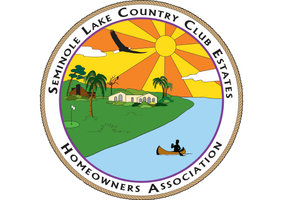A Deed Restricted Community.
THE HOA MEETING IS HELD ON THE THIRD MONDAY OF EVERY MONTH
AT 7 P.M. IN THE GOLF COURSE CLUBHOUSE AT 6100 AUGUSTA BLVD.
THE MEETING AGENDA IS AVAILABLE UNDER THE "FOR RESIDENTS" SECTION OF THIS WEBSITE AND POSTED AT THE CLUBHOUSE ON THE FIRST BULLETIN BOARD.
SLLCE LOGO DESIGNED BY BARBARA SALAZAR
Photo courtesy of Lisa Stiffler
PLEASE NOTE THAT AS OF 7/27/2023 ALL REMITTANCE OF HOA DUES ARE TO BE SENT TO:
SEMINOLE LAKE COUNTRY CLUB ESTATES HOA
P.O. BOX 7894
SEMINOLE, FL 33775
REGARDING THE WEBSITE ONLY, CONTACT: [email protected]
ALL OTHER MATTERS, USE 'CONTACT US FORM"
Pages
- Home
- CONTACT US FORM
- OFFICERS & BOARD
- SLCCE FAQS
- DEED RESTRICTIONS, AND MORE
- INTERNAL DOCUMENTS
- PROJECT APPROVAL FORM
- INTERNAL DOCUMENTS
- QUICK REFERENCE INFORMATION
- USEFUL INFORMATION
- HELPFUL LINKS
- SLCCE HISTORY
- PHOTO ALBUM
- NEWS AND ANNOUNCEMENTS
- NOTICES
- BAYWOOD LAKE INFO
- HISTORIC DOCUMENTS
- BAYWOOD LAKE FUND
- INVASIVE PLANTS
- The OFFICIAL HOA Facebook Page
- FOR RESIDENTS
- CALENDAR
- NEWSLETTER
- RESIDENT DIRECTORY
- PET DIRECTORY
- LIST OF AREAS WITHIN SLCCE HOA
- HOA COMMITTEES
- RECIPE SHARING
- HOA MEETING AGENDA
Yard of the Month
 This month's winners, The Batalis'! 9083 BPD
This month's winners, The Batalis'! 9083 BPD


